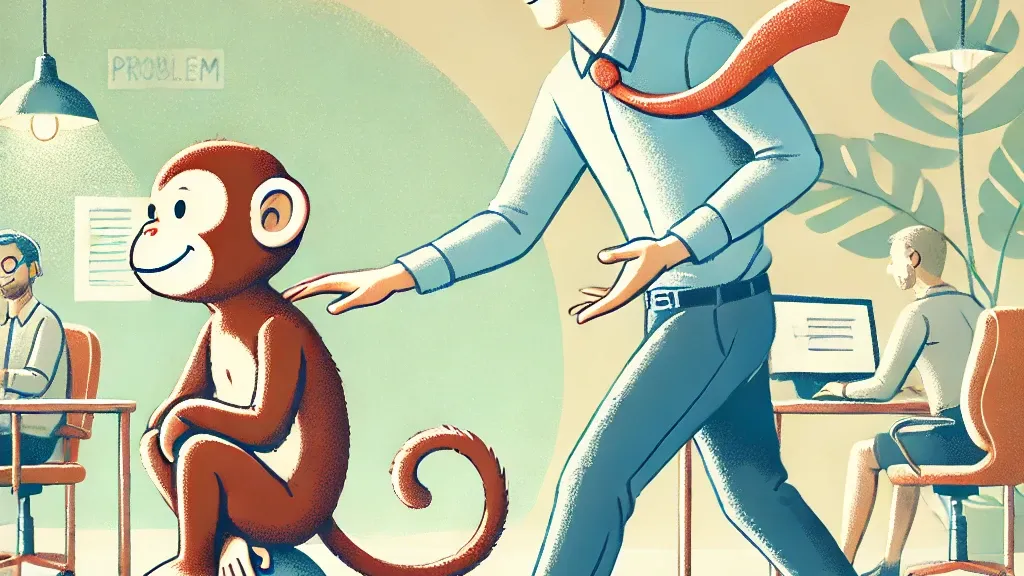Empowering Managers to Keep the Monkey Where It Belongs
One of the most powerful dynamics in leadership is the ability to delegate responsibility while fostering accountability. Too often, leaders find themselves overwhelmed by problems that don’t really belong to them—problems they’ve inherited from their team members. This is where the metaphor of “Who Has the Monkey?” from William Oncken Jr. and Donald Wass’s influential 1974 management article comes into play.
The “monkey” represents a problem or task, and the key idea is this: the person who owns the problem should also own the solution. However, in many organizations, managers end up overloaded because their team members offload their monkeys, seeking help but leaving the responsibility behind. This creates a dynamic where managers are not just solving their own strategic issues but also firefighting the day-to-day challenges of their teams.
So, how can we shift this dynamic and create a culture of ownership and accountability?
Empower Your Team to Solve Their Own Problems
Leadership isn’t about taking on every challenge personally—it’s about empowering your team to handle their own. This means guiding your team to bring not just problems, but also potential solutions when they come to you. When managers come to organizational leaders with an issue, they should already have considered some steps they can take to address it.
Ask guiding questions like, “What do you think we should do?” or “How have you approached this so far?” These types of questions put the responsibility back on the team member and encourage critical thinking. This way, you’re not just handing out solutions but helping them develop problem-solving skills that will benefit them—and your organization—in the long run.
Avoid Taking the Monkey
It’s easy to fall into the trap of “rescuing” your team by taking on their tasks, but this only creates a cycle of dependency. The more you do this, the more your team will rely on you, and the less they will take ownership of their responsibilities. Instead, make it clear that while you are available for support, the problem remains with them.
This is where expectation setting is crucial. Let your team know that they are empowered to handle their monkeys. By holding onto their tasks and encouraging them to come up with solutions, you are instilling a sense of ownership and responsibility. This empowerment allows them to grow, solve problems independently, and ultimately, become stronger contributors to the organization.
Why It Matters: Leaders Need Space to Lead
At the core of this dynamic is the idea that leaders need to free themselves from operational minutiae to focus on strategic tasks. If leaders are constantly dealing with other people’s monkeys, they are pulled away from higher-level decision-making and growth opportunities for the organization.
By empowering your team to own their problems and solutions, you create a culture of accountability, growth, and self-sufficiency. More importantly, you ensure that leadership remains focused on what matters most: driving the organization forward, not being bogged down by tasks that should be handled at different levels.
Final Thought: Who Has the Monkey?
As a leader, the next time a team member comes to you with a problem, ask yourself: Who has the monkey? And more importantly, who should have it? Empowering your managers and team members to take ownership of their monkeys not only builds a stronger team but also frees you to lead strategically.
What do you think? How do you maintain accountability while empowering your team? Share your thoughts and experiences!
